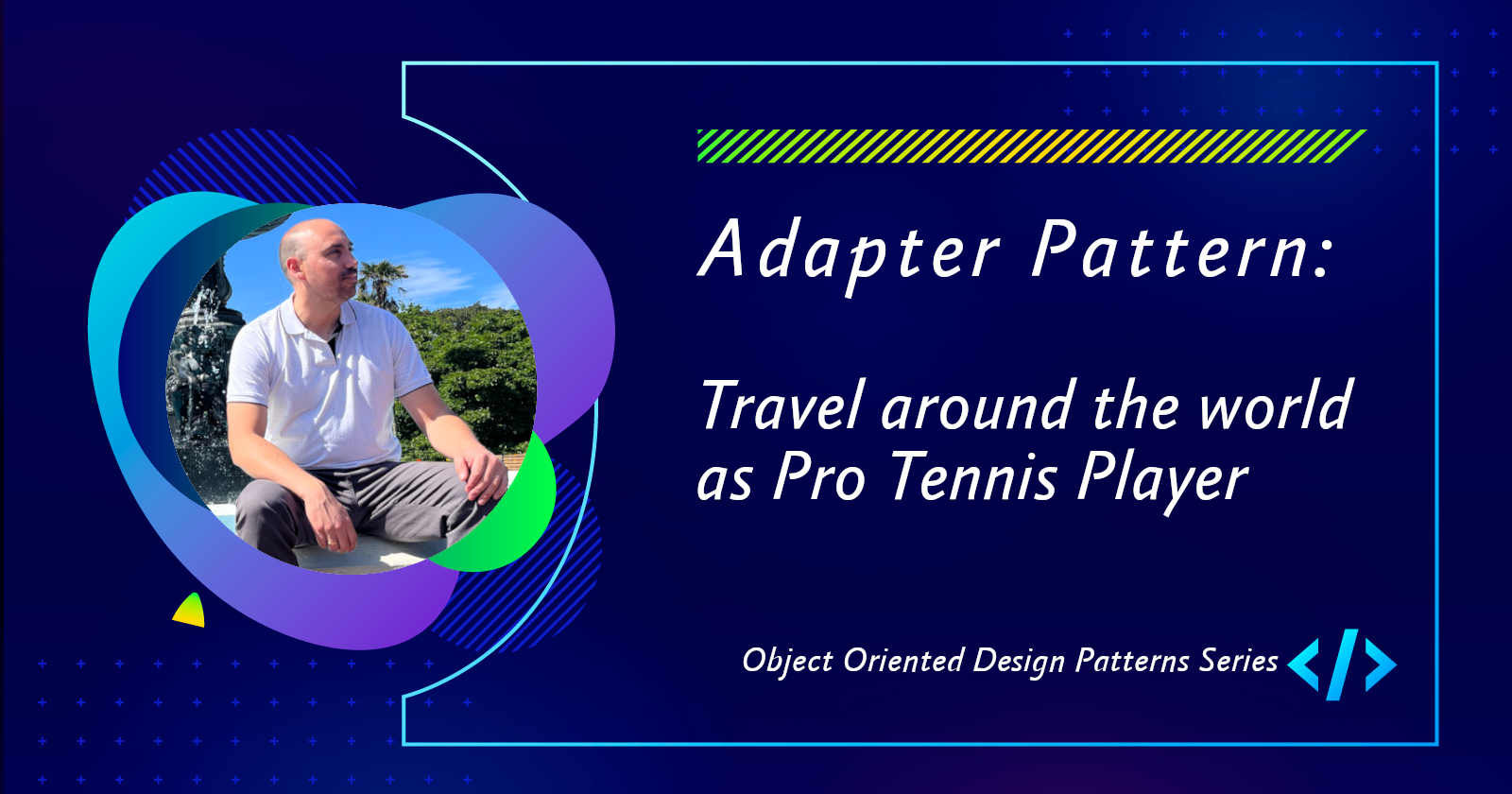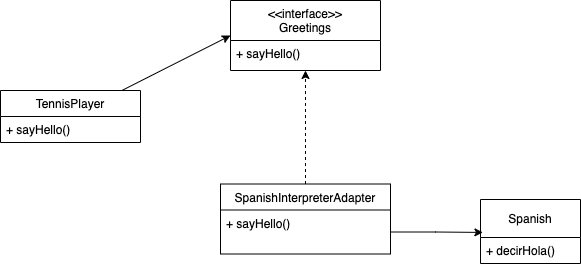Adapter Pattern: Travel around the world as Pro Tennis Player
 Max Martínez Cartagena
Max Martínez Cartagena
Imagine you are a professional tennis player who travel around the world for important tournaments but you are not able to speak any language other than English... So, in every non-english country you need someone to helps you with the speech. You might need to hire a professional interpreter to adapt your speech into the fan's country...
Given the above context, let's have a look at the definition of the Adapter Pattern:
"Adapter pattern allows objects with incompatible interfaces to work together".
And also, here is the Adapter Pattern class diagram:

Client: The component which is implemented against the target interface.
Target: The expected interface that the client invokes method on.
Adapter: The code that allows implement the interface that the client implements which has the ability to "talk" with the "adaptee" class.
Adaptee: is the library, component or system that we are not able to change.
Hiring a professional interpreter
Backing to the Profesional Tennis Player example; We have a player who is an english speaker and fans around the world (non-english speaker). As the player's fans doesn't speak english and we can not change the way that fans speaks we will use a "profesional interpreter" to translate the player's speech into the fan's language rather than learn every single language.
Before writing the code, let's look at the class diagram:

Greetings: A polite word or sign of welcome
TennisPlayer: Is the client who uses an english interface to say hello
SpanisInterpreterAdapter: Is the interpreter who can understand english and also, speak Spanish.
Spanish: Thats represent the language of the player's fans
Target
The IGreetings interface represents the "Target" node of the Adapter Pattern diagram. We have a simple interface with one method to say hello:
export interface IGreetings {
sayHello: () => void;
}
Adapter Class
The SpanishInterpreterAdapter class represents the "Adapter" node of the Adapter Pattern diagram. Also, this class implements the IGreetings interface because it is able to connect both incompatibles languages:
import { IGreetings } from "./greetings.interface";
import { Spanish } from "./spanish";
export class SpanishInterpreterAdapter implements IGreetings {
constructor(private spanish: Spanish) {}
sayHello(): void {
// the interpreter know's how to say hello in spanish
this.spanish.decirHola();
}
}
Adaptee Class
The Spanish class represents the "Adaptee" node of the Adapter Pattern diagram. We have a simple class with one method to say hello in spanish:
export class Spanish {
//sayHello means decirHola in Spanish
decirHola(): void {
console.log("Hola!");
}
}
Client
This is our Profesional Tennis Player which represents the "Client" node of the Adapter Pattern diagram:
import { Spanish } from "./src/spanish";
import { SpanishInterpreterAdapter } from "./src/spanish-interpreter.adapter";
// our professional tenis now is playing an important match in Spain
// we need to hire an interpreter to translate their speech from English to Spanish
const spanishInterpreterAdapter = new SpanishInterpreterAdapter(new Spanish());
spanishInterpreterAdapter.sayHello();
// Hola! (means hello in english)
Conclusions
Often we can get "Facade pattern" and "Adapter pattern" confused. The main difference between they is their purpose: "facade pattern" simplifies interactions with a complex subsystem, while "adapter pattern" helps to make incompatible interfaces work together.
The adapter pattern is used when you need to adapt an existing class to meet the needs of a new interface, rather than simplifying access to a complex subsystem.
I hope that this article was useful for improve your design patterns skills.
See you in the next one!
Subscribe to my newsletter
Read articles from Max Martínez Cartagena directly inside your inbox. Subscribe to the newsletter, and don't miss out.
Written by

Max Martínez Cartagena
Max Martínez Cartagena
I'm an enthusiastic Chilean software engineer in New Zeland. I mostly focus on the back-end of the systems. This is my site, Señor Developer, where I share my knowledge and experience.